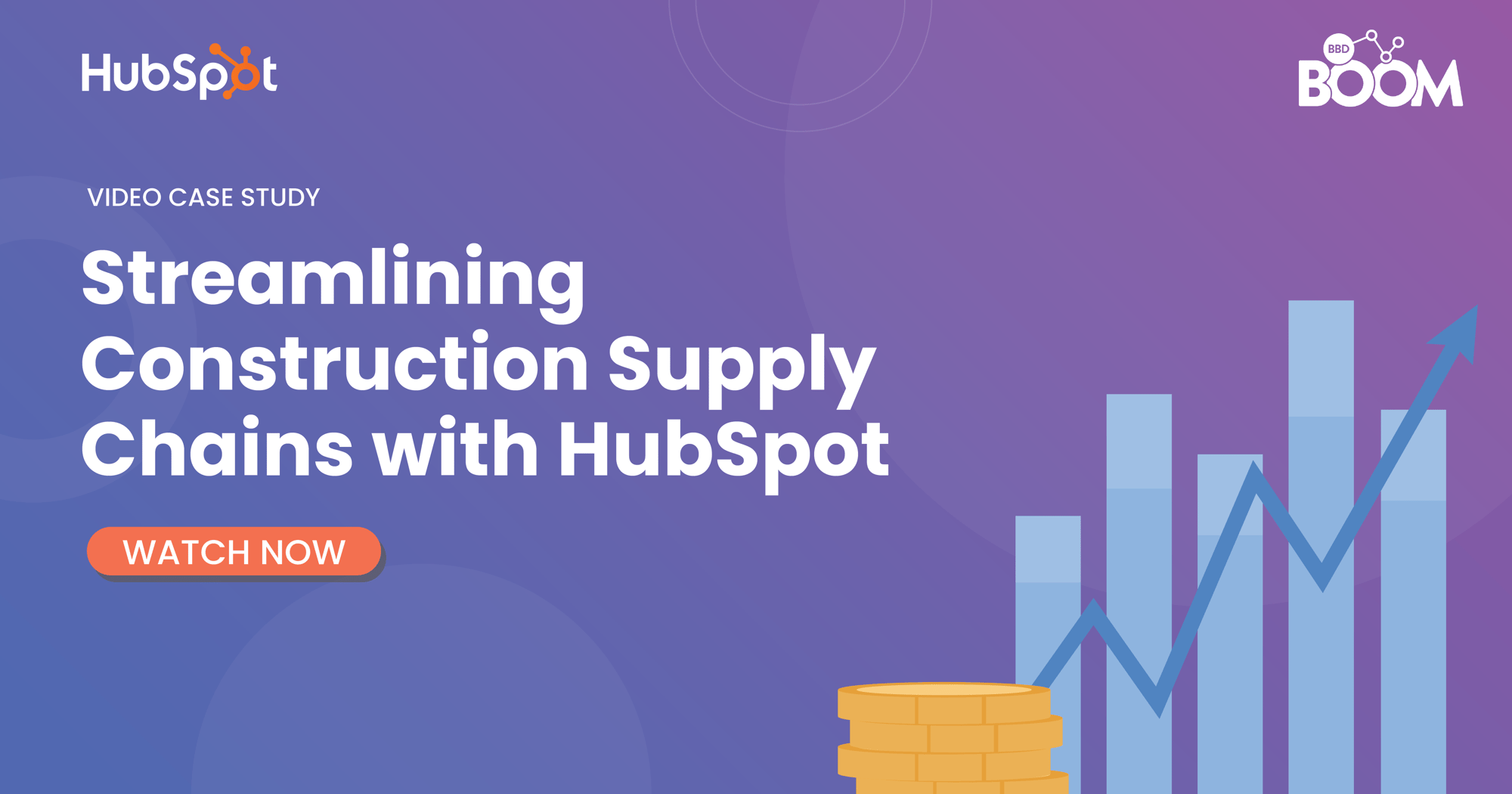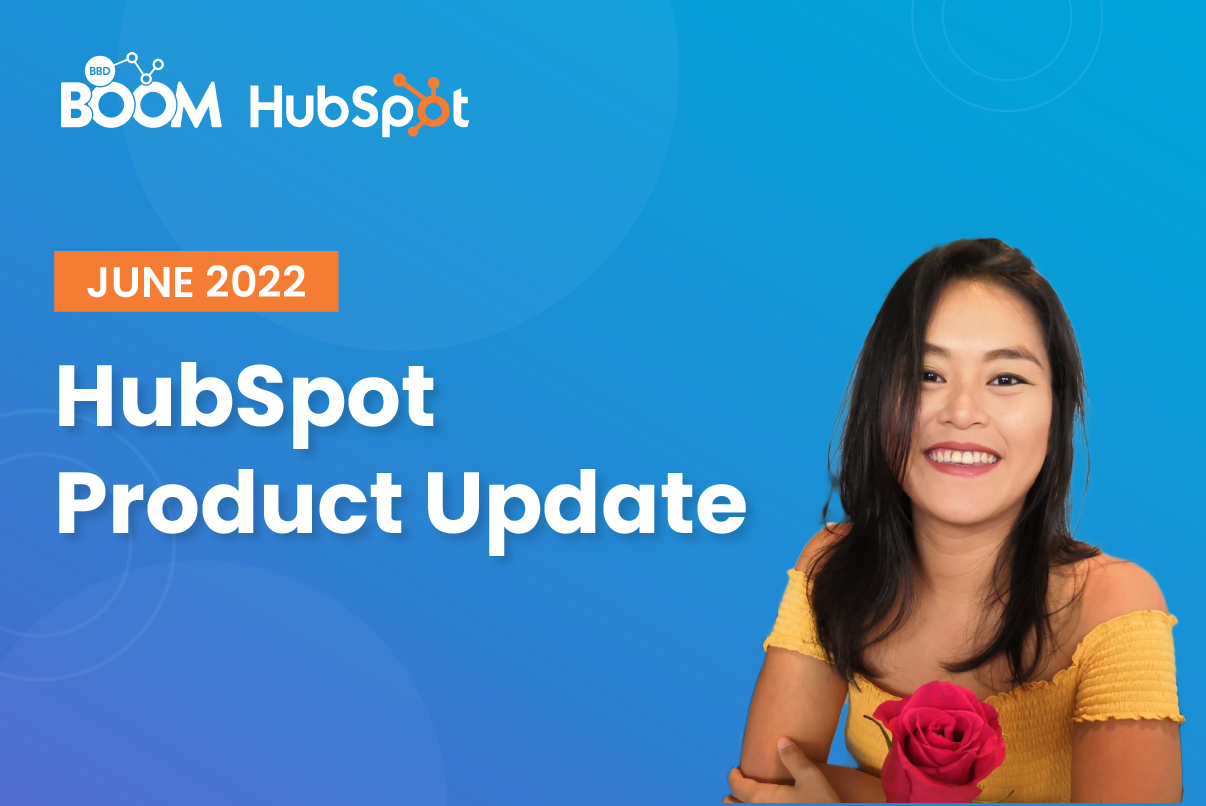Welcome to our HubSpot Product Spotlight for June! In this blog, we’ll explore some of the team's favourite HubSpot updates from the last month. Ready? Let’s dive in!
Now Live
These are all the features now live and ready to use in your HubSpot portal.
Additional Properties Available for Custom Views in the Inbox
What is it?
A whole host of new default properties and custom ticket properties are now available for Custom Views in the Inbox. This expanded list of properties enables your team to further organise your inbox by building views based on various ticket and conversation properties.
Why does it matter?
Since the launch of custom views in March 2022, a top piece of feedback was more flexibility and customisation with the properties available when building out custom views. Expanding the properties in the view builder allows you to organise your inbox further to support your unique team structure and processes.
Available on: All products/Professional and Enterprise
New Quote Templates now available, includes custom properties in line items table
Flow, a new quote theme, is now available in customised Quote Templates. Flow offers two (2) templates. The first is very content rich with a variety of text modules and images, including a testimonial module. The second is optimised for showcasing line items and accepting payments.
Additionally, the line item module in this theme will support custom line item properties, a highly requested feature by customers.
Why does it matter?
With the launch of customised Quote Templates in March, we've heard two key pieces of feedback.
- I'd like to edit my customised quote template like landing pages and email
- I'd like to build out a more content rich quote like a proposal
As an interim solution, we plan to introduce a wider variety of templates to help alleviate some of this pain.
Available on: Sales Pro and Enterprise Users
Call direction is a CRM property
What is it?
Call direction (inbound and outbound) is now a CRM property. Users can view and set the direction in the activity timeline and add it to manual call logs.
Why does it matter?
It is important for users to know the direction of a call as the locate records and derive context from previous customer interactions.
Available on: Available to all customers
A new process to create reports and dashboards
What is it?
When creating a new report or new dashboard, you will be greeted by a new space that combines the options to build from scratch or choose from templates.

When browsing HubSpot provided report templates, you will have access to revamped filters for easy sorting to find the perfect template for your report.
Why does it matter?
Reporting is crucial to understanding what parts of your strategy are working and where you can improve. When looking to generate insight on your team strategy in the form of a report or dashboard, it can be easier and faster to have some inspiration or a place to start.
Before, there were different experiences when creating new reports and new dashboards. These experiences had different filters, search functionalities, and categories, resulting in inconsistency and potential confusion over what is available when creating new reporting assets.
Now, we've streamlined to provide one consistent experience between creating new reports and dashboards. When creating either a new report or dashboard, you will now see options to start from scratch or start from a template in the same step. This will save time and provide clarity on the options available to build the best reports and dashboards for your business.
Available on: All Products and Plans
Free CMS tools
Today, we’re introducing free CMS tools, built for small business founders and operators who are looking to quickly and efficiently create their first website and grow their business.
The free CMS tools include:
- Access to the Asset Marketplace, filled with free and paid themes
- Ability to publish up to 25 website pages in multiple languages
- Blogging tools (1 blog / up to 100 blog posts)
- Ability to connect a custom domain for website pages, blog posts, and landing pages
- Drag-and-drop editing
- Page-level analytics and Web Analytics dashboard
- Built-in SEO recommendations
- Developer tools (ability to modify your page HTML, CSS, and JavaScript using the Design Manager and CLI)
Why does it matter?
A company's website is often the first touch point a prospective customer has with that business, making it an important marketing asset. That's why growing businesses need a CMS that enables them to create a website that is customised to their unique needs. Historically, those customisation options have only been available in legacy CMS systems that are prohibitively expensive and often require developer resources that many growing businesses don't have.
HubSpot’s CMS Hub is built differently, removing the need for customers to have to choose between ease of use and powerful, sophisticated software. With the launch of free CMS tools, we're now providing even wider access to the tools small and growing businesses need to build a website that will help them scale.
Available on: All Products and Plans
Custom Objects Are Now in the Navigation
What is it?
To make it easier to find the data you need, we’ve added custom objects to the global navigation.
Bonus! As part of this release, you can also now set custom objects as your default homepage. This way objects are the first thing you see when you log in to HubSpot (no more bookmarking!).
Why does it matter?
As an Enterprise customer, custom objects can be as important—if not more important—to your HubSpot experience as standard objects. You should be able to find them as easily as contacts, companies, deals, and tickets, which are all right there in the global navigation (i.e., the top nav bar).
Otherwise, you might end up struggling to find the objects you most need to see, which can lead to lost productivity and unnecessary corrective steps—like writing help documentation to guide you to your objects.
We’re fixing all of that by adding custom objects to the navigation.
Available on: Enterprise level
Rearrange the Order of Custom Views in the Inbox
What is it?
Users can now rearrange the order in which custom views appear in the inbox via drag and drop functionality.
Why does it matter?
As your business scales, so does the number of custom views you have within their conversations inbox. In the past, there was no way to customise the order in which custom views appeared within the left-hand sidebar of your conversations inbox. Custom views were listed in the order in which they were created.
With today's update, you can now rearrange your custom views, giving you more control over which views are prioritised and shown first. This update allows you to customise which views take precedence over others to help increase your productivity and ability to serve your customers effectively.
This update was also a frequently requested functionality improvement since custom views launched in March 2022.
Available on: All Products and Plans
Beta
These updates are currently in the works and nearly ready to be released on your HubSpot Portal.
Bulk Merge Duplicate Contacts and Companies
What is it?
The ability to bulk select and merge duplicate contact and company records from the duplicates management tool.
Why does it matter?
Duplicates often lead to miscommunication, inaccurate reporting, and misinformation within teams. The new duplicate management functionality now allows for quicker and easier clean-up when duplicates end up in the CRM.
Available on: Operations Hub Professional and Operations Hub Enterprise.
LinkedIn Ad Conversion Events
What is it?
Ad conversion events are now available for LinkedIn. You will now be able to sync lifecycle stage changes, (as are you are able to today for Google and Facebook) for LinkedIn as well.
Why does it matter?
Sending your first party data back to ad networks is critical for ensuring your ad spend is properly optimised. Now you will be able to send data back to LinkedIn every time a contact changes lifecycle stages along with a deal value or custom value so LinkedIn can apply that to its optimisations.
For example, say you ran Campaign A with LinkedIn and got 10 clicks which turned into 5 contacts. 3 of those contacts turned into SQLs with associated deals of $1,000 each. If you set up an SQL event for LinkedIn from HubSpot, you'll be able to let LinkedIn know that 3 of the clicks they sent you on Campaign A turned into SQLs each worth $1,000 each. LinkedIn in turn will use that information to further optimise your campaigns.
Beginning in August when this product goes fully live within LinkedIn, you will also have the ability to attribute these events to specific campaigns within the LinkedIn Campaign Manager UI to see reporting within LinkedIn.
Available on: Marketing Hub Professional and Enterprise
Customise the navigation menu inside your customer portal
What is it?
It is now possible to customise the navigation menu inside of your customer portal.
Why does it matter?
In short, users expect to customise the navigation menu in their customer portal just as they would with any other HubSpot-hosted content. And now they can!
Until now, every customer portal had a default navigation menu with preset links and no pathway to customise the menu text or destination URLs, which presented a handful of issues:
- HubSpot's default options did not always match existing branding. For those who typically call their "Knowledge Base" a "Help Center," for example, our default navigation menu text diverged from established branding that people were familiar with.
- There was no support for external Knowledge Bases. We automatically populated a link to Service Hub's Knowledge Base tool. For those using an external Knowledge Base solution, there was no way to promote it within their customer portal.
- There was no option to promote other useful content. We only allowed links to create a ticket, view all tickets, or go to the Knowledge Base. Other useful resources to share with customers -- like a video library or pricing page -- could not be added to the customer portal’s navigation.
Available on: Service Hub Professional and Enterprise
Rolling Out
Lists Tool Read / Write Permissions
What is it?
We are splitting up permissions for the lists tool into “List Read” and “List Write” to more accurately reflect the distinct use cases for lists in HubSpot.
Why does it matter?
Teams that use lists to segment their data or power emails or workflows, may find that many team members need access to lists, but do not necessarily need the ability to make changes to the lists they see.
Historically, admins have had to choose between giving users full access to lists (i.e., the ability to both see lists and make changes to lists) OR restrict their access completely.
With the rollout of read/write permissions for lists, we've increased the granularity of list permissions, giving admins more control.
Available on: All Products and Plans
Any Column as Record ID for Imports
What is it?
When importing data into HubSpot, you previously had the option to specify whether or not your file included a column for an “Object ID.” The name of this Object ID would vary based on the object that you were importing (Contact ID, Company ID, etc.).
To create more consistency, all these unique identifiers will now simply be called "Record ID." You also no longer have to specify that your import file includes one of these IDs when uploading your files into the import wizard. Instead, simply select that a specific column within your import file is a Record ID when you're mapping properties.
Why does it matter?
A lot of users leverage these HubSpot-assigned ID properties to bulk update records in the CRM. Previously, you had to specify that your import file included one of these properties before you began mapping the properties, and we required the column header for this property stick to a very specific naming convention. This added an unnecessarily complex step to updating records.
Going forward, we'll treat the Record ID like any other property in your import. You now have the option to select this ID as a unique identifier for your records when mapping your properties before finishing your import. We'll also no longer enforce strict rules around the column header for this import like we previously did.
Available on: All products/Professional and Enterprise
.png?width=877&height=508&name=bbd-boom-siloy-navy+blue-logo%20(1).png)
.png)









-4.png?width=352&name=Resource%20(2)-4.png)
